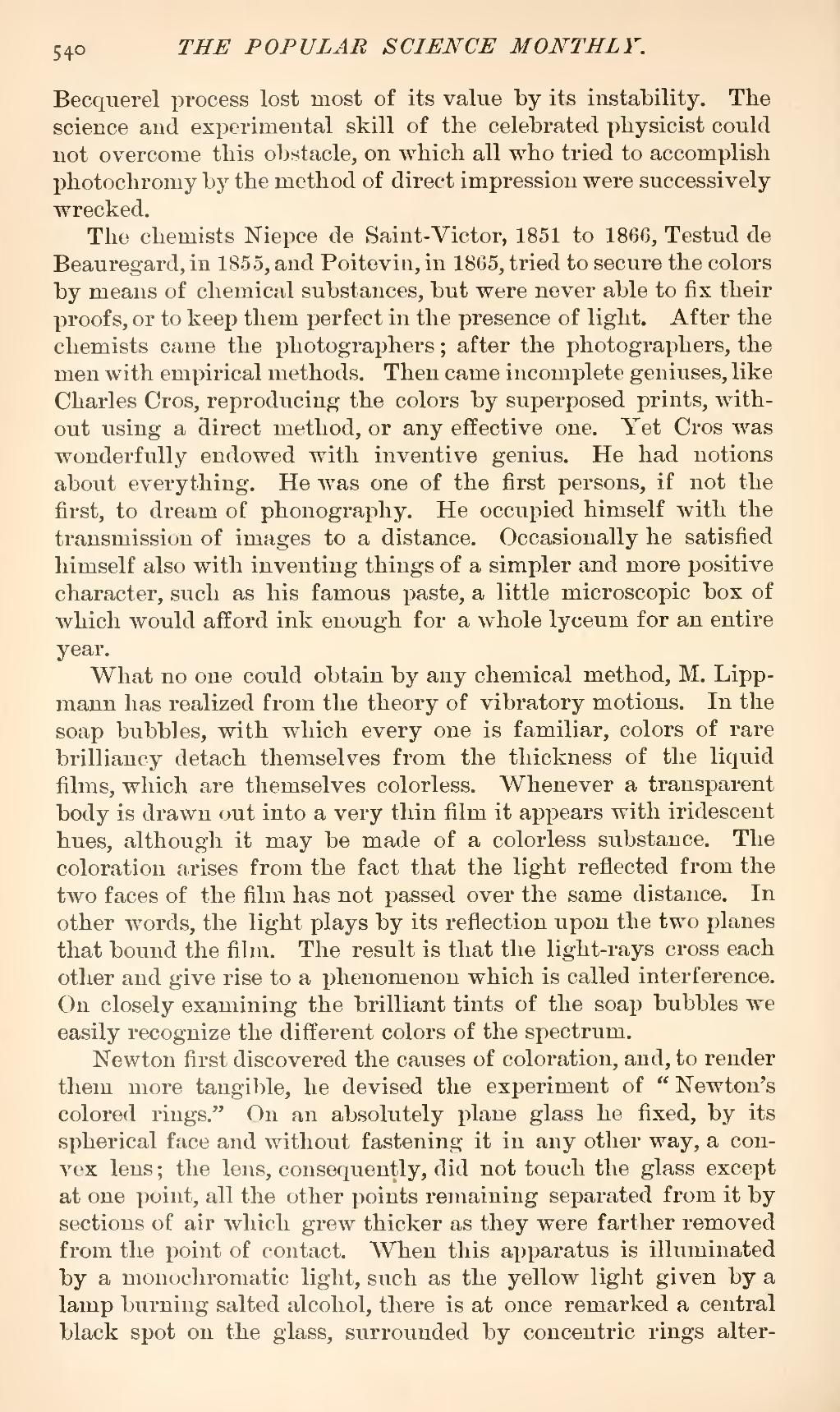Becquerel process lost most of its value by its instability. The science and experimental skill of the celebrated physicist could not overcome this obstacle, on which all who tried to accomplish photochromy by the method of direct impression were successively wrecked.
The chemists Niepce de Saint-Victor, 1851 to 1866, Testud de Beauregard, in 1855, and Poitevin,in 1865, tried to secure the colors by means of chemical substances, but were never able to fix their proofs, or to keep them perfect in the presence of light. After the chemists came the photographers; after the photographers, the men with empirical methods. Then came incomplete geniuses, like Charles Cros, reproducing the colors by superposed prints, without using a direct method, or any effective one. Yet Cros was wonderfully endowed with inventive genius. He had notions about everything. He was one of the first persons, if not the first, to dream of phonography. He occupied himself with the transmission of images to a distance. Occasionally he satisfied himself also with inventing things of a simpler and more positive character, such as his famous paste, a little microscopic box of which would afford ink enough for a whole lyceum for an entire year.
What no one could obtain by any chemical method, M. Lippmann has realized from the theory of vibratory motions. In the soap bubbles, with which every one is familiar, colors of rare brilliancy detach themselves from the thickness of the liquid films, which are themselves colorless. Whenever a transparent body is drawn out into a very thin film it appears with iridescent hues, although it may be made of a colorless substance. The coloration arises from the fact that the light reflected from the two faces of the film has not passed over the same distance. In other words, the light plays by its reflection upon the two planes that bound the film. The result is that the light-rays cross each other and give rise to a phenomenon which is called interference. On closely examining the brilliant tints of the soap bubbles we easily recognize the different colors of the spectrum.
Newton first discovered the causes of coloration, and, to render them more tangible, he devised the experiment of "Newton's colored rings." On an absolutely plane glass he fixed, by its spherical face and without fastening it in any other way, a convex lens; the lens, consequently, did not touch the glass except at one point, all the other points remaining separated from it by sections of air which grew thicker as they were farther removed from the point of contact. When this apparatus is illuminated by a monochromatic light, such as the yellow light given by a lamp burning salted alcohol, there is at once remarked a central black spot on the glass, surrounded by concentric rings alter-
